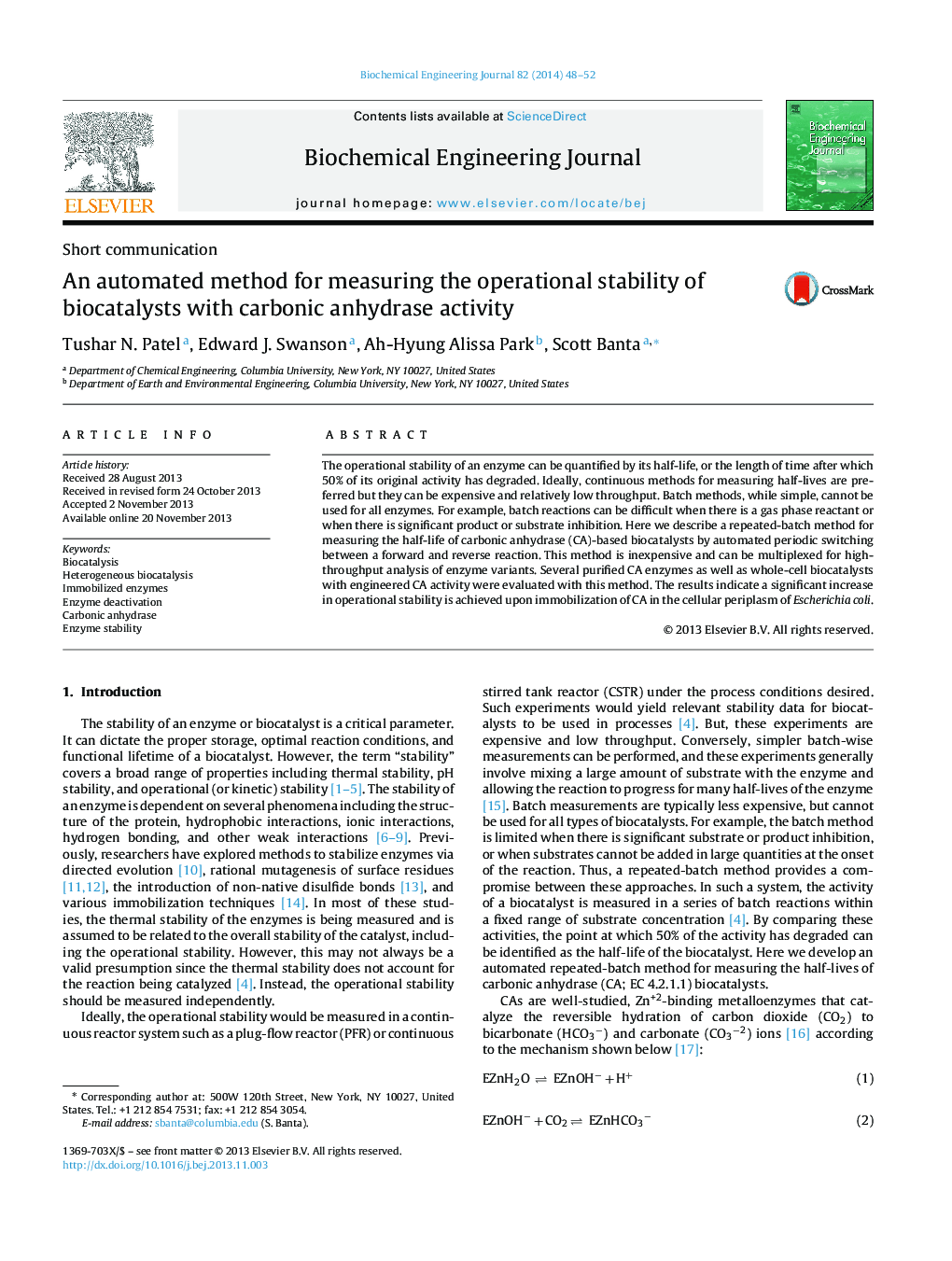| Article ID | Journal | Published Year | Pages | File Type |
|---|---|---|---|---|
| 6484092 | Biochemical Engineering Journal | 2014 | 5 Pages |
Abstract
The operational stability of an enzyme can be quantified by its half-life, or the length of time after which 50% of its original activity has degraded. Ideally, continuous methods for measuring half-lives are preferred but they can be expensive and relatively low throughput. Batch methods, while simple, cannot be used for all enzymes. For example, batch reactions can be difficult when there is a gas phase reactant or when there is significant product or substrate inhibition. Here we describe a repeated-batch method for measuring the half-life of carbonic anhydrase (CA)-based biocatalysts by automated periodic switching between a forward and reverse reaction. This method is inexpensive and can be multiplexed for high-throughput analysis of enzyme variants. Several purified CA enzymes as well as whole-cell biocatalysts with engineered CA activity were evaluated with this method. The results indicate a significant increase in operational stability is achieved upon immobilization of CA in the cellular periplasm of Escherichia coli.
Keywords
Related Topics
Physical Sciences and Engineering
Chemical Engineering
Bioengineering
Authors
Tushar N. Patel, Edward J. Swanson, Ah-Hyung Alissa Park, Scott Banta,
